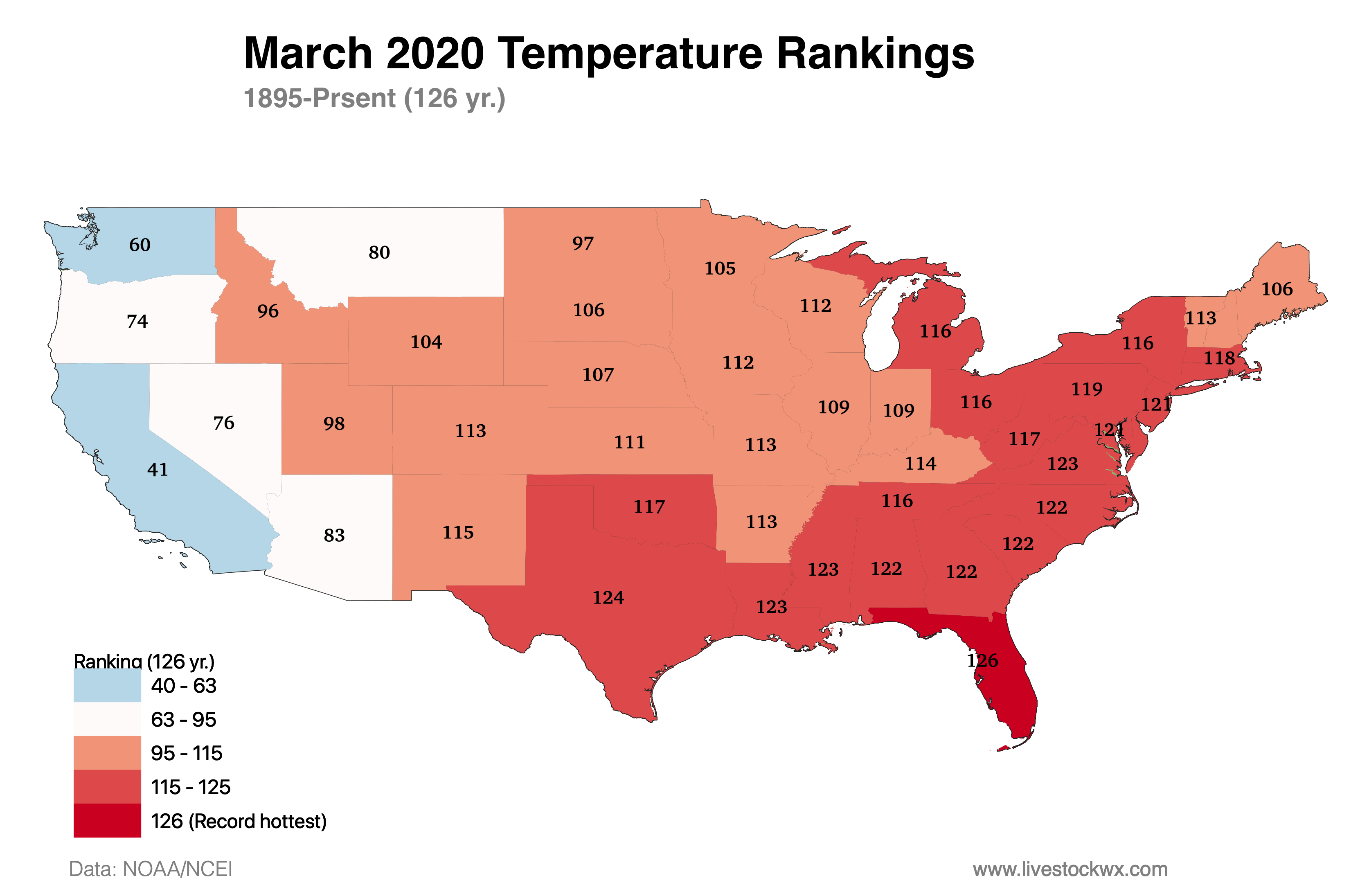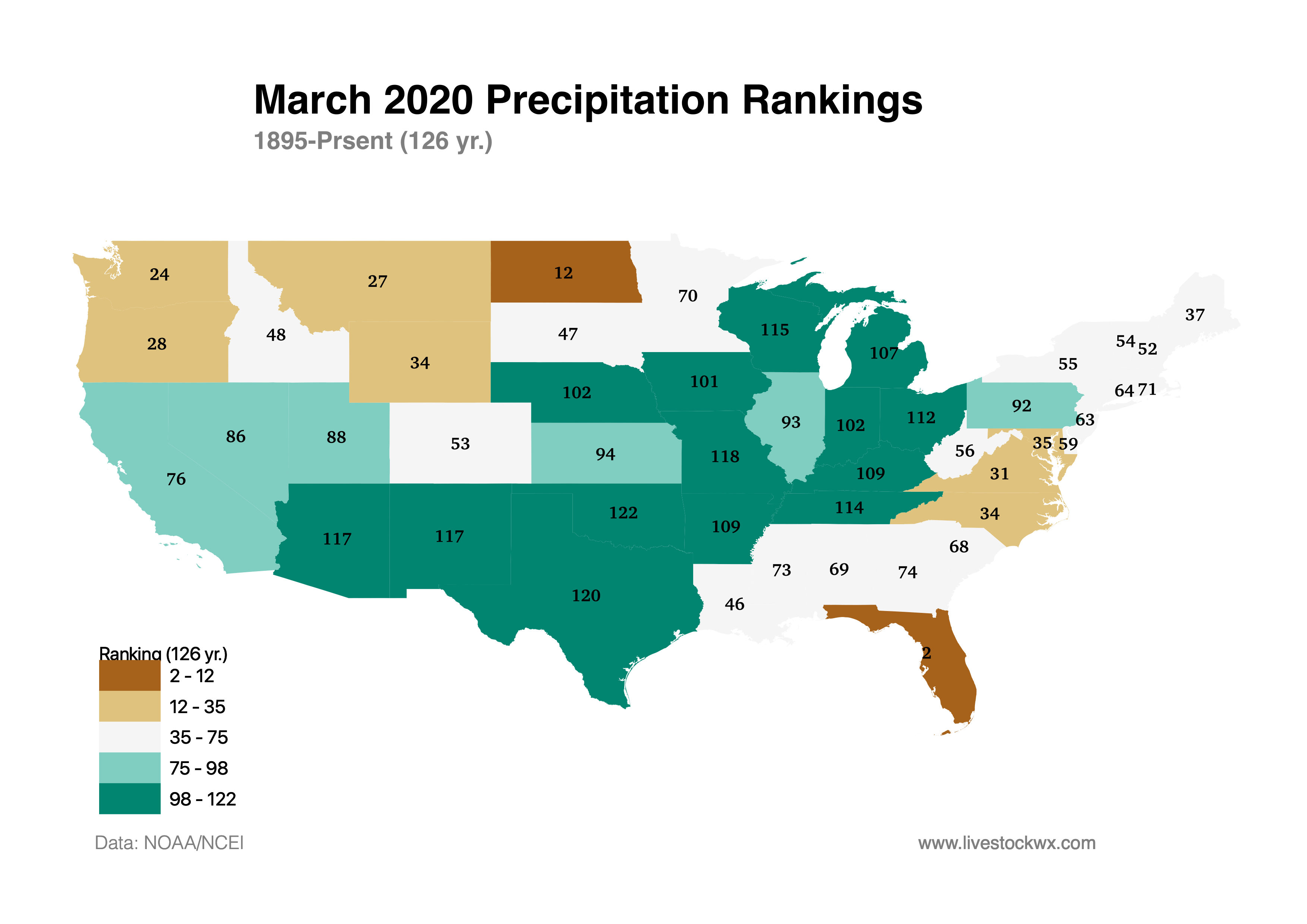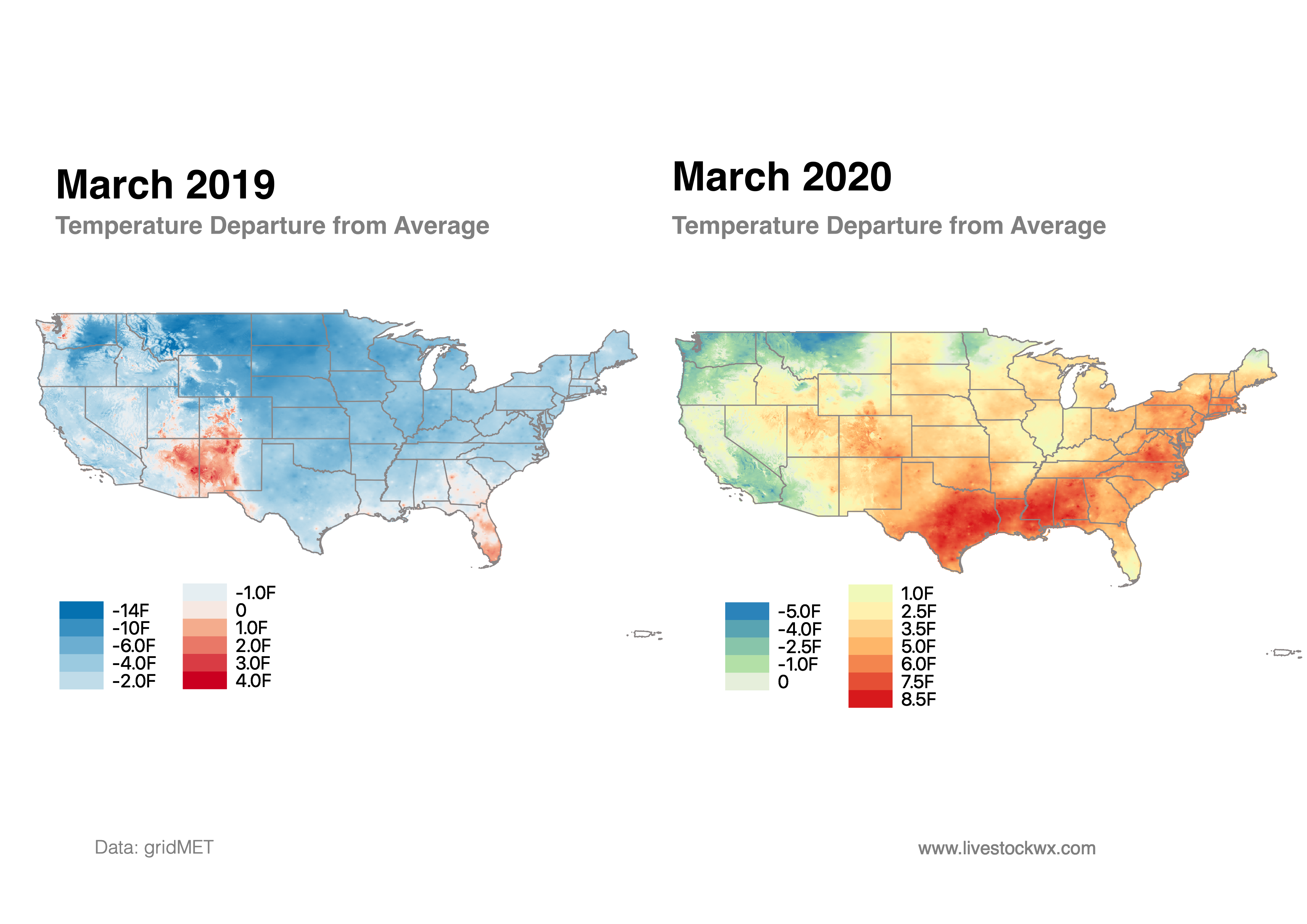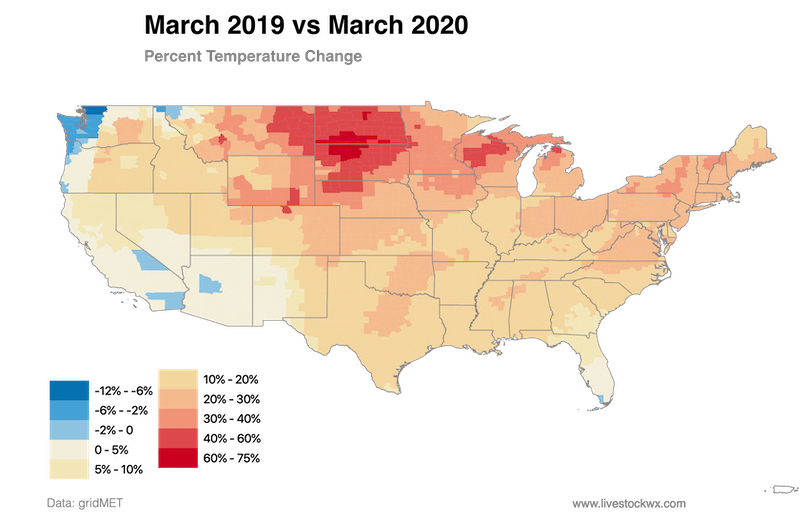Livestock Wx
Florida Observed the Hottest and Second Driest March on Record. Big Change Compared to March 2019
- livestockwx
- April 8, 2020
- 8:55 pm
NOAA released their climate rankings this morning (April 8th) for this past March. What a difference a year makes. Last year we were discussing what a cold, and in some places, extremely wet (i.e. Central Plains) March it had been. Florida just experienced its warmest and second driest March on record going back to 1895. Texas observed its third warmest March, but it was also in the top 10 wettest March on record (see the below maps for your state). What gives?

If you break things down a bit and look at variation within the states, you see there was a big break between the northern and Southern regions of the Gulf States. For example, North Texas observed its second wettest March on record while South Texas observed near normal precipitation.

So now we know how this past March compared to the long-term record, how different was it compared to March 2019? The images below are pretty striking. The first two show how much 2019 and 2020 deviated from what we would typically expect (based on averages from the 30 years between 1981-2010). In 2019 there were not a lot of oranges or reds. Just a lot of blue compared to this year where many states were in their top 10th percentile!

The last image shows the percent difference of 2019 to 2020. While the percent difference was positive for most of the country, we really see big positive values in the Northern Plains. Some places in North and South Dakota saw a 60% or more increase in their average March temperature. That’s pretty striking. The Southern Plains have also seen an increase but mostly in the 10%-30% range. The bottom line here is that while Florida broke a record for their warmest March, the Northern and Central Plains observed a pretty drastic increase from 2019 to 2020. This should translate into a much better calving and lambing season for producers in those areas.
